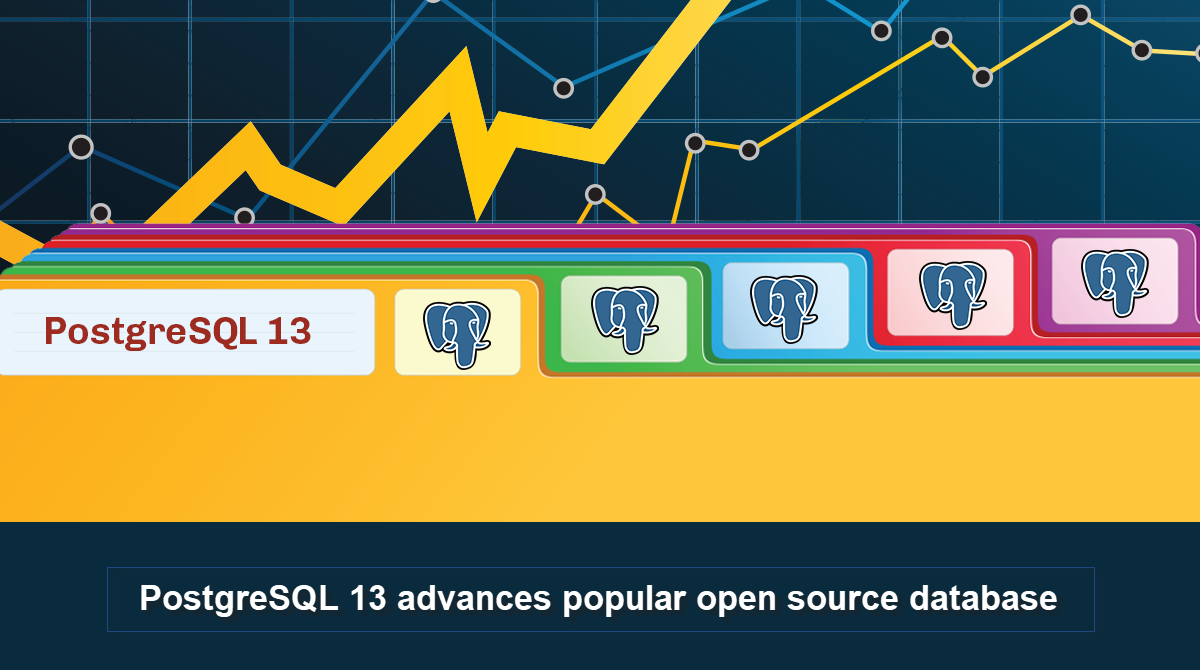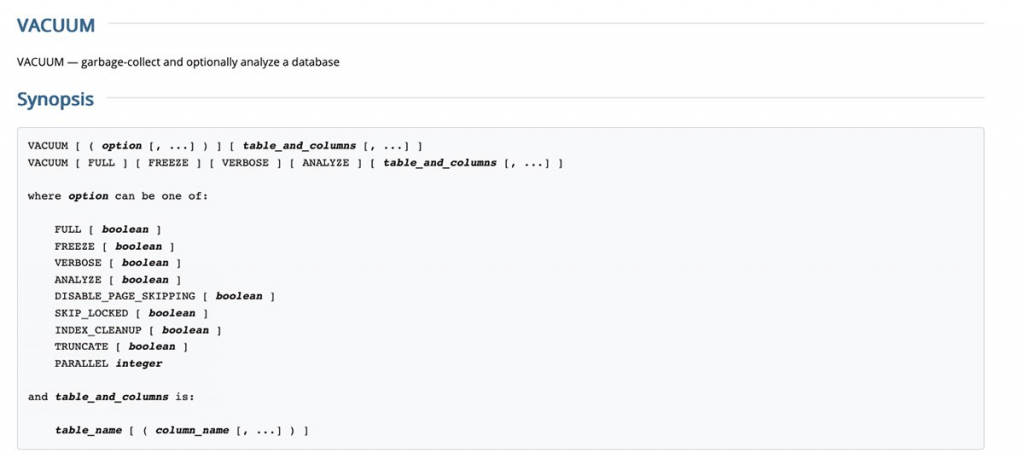PostgreSQL 13 advances popular open-source database

With thousands of users, contributors, corporations, and organizations worldwide, PostgreSQL is the world’s most sophisticated open-source database. PostgreSQL is based on nearly 30 years of engineering, beginning at the University of California, Berkeley, and has progressed at an unmatched pace. The mature feature set of PostgreSQL not only meets but outperforms leading commercial database systems in terms of sophisticated database capabilities, flexibility, security, and reliability. The PostgreSQL training course aids you in developing the skills required to master the PostgreSQL concepts available online where you will learn about the architecture of PostgreSQL, database management and configuration, table partitioning, database monitoring, PostgreSQL security, and backup recovery, etc.
The open-source database project has released its first major milestone release of 2020, which will provide users with improved data query performance and improvements to improve overall operations.
In its newest edition, the open-source PostgreSQL database project continues to increase speed while also providing users with better monitoring features.
The PostgreSQL 13 release, which went live on September 24, is the first significant upgrade to the popular open-source database since the PostgreSQL 12 release in October of 2019. Database administrators can benefit from a set of administrative optimizations in PostgreSQL 13.
The new edition also provides performance enhancements over prior versions.
PostgreSQL is becoming more widely used, and many third-party database management suppliers, including public cloud providers, now provide PostgreSQL-compatible interfaces.
Larger businesses’ usage of hybrid and public clouds should drive even more PostgreSQL adoption, according to Carl Olofson, research vice president at IDC.
“The enhancements in PostgreSQL 13 appear to be mostly focused on efficiency, which can be significant given that resource waste is a major epitome of low database performance,” he said. “The wide spectrum of enhancements demonstrates the value of open source technology development.”
Series of efficiency boosts
Work on B-tree index deduplication, which will make indexes smaller and more performant, is one of the performance enhancements in PostgreSQL 13, according to Jonathan Katz, a significant contributor to the PostgreSQL Project.
PostgreSQL 13 also boosts the speed of partitioned tables, making data queries quicker, according to Katz. PostgreSQL 13 speeds up processes for those who write a lot of analytical queries that employ aggregate functions, according to him.
Parallelized vacuuming boosts PostgreSQL 13 databases
Data “vacuuming” has long been a basic notion in PostgreSQL and other databases, allowing the database to suck up or vacuum space once a record is removed. A new method for database indexes in PostgreSQL 13 speeds up the cleaning process.
Indexes may now be vacuumed in parallel, which was previously unavailable, according to Katz, who said that if a table contains several indexes, the indexes can now be vacuumed simultaneously rather than one at a time.

PostgreSQL 13 adds a new parallelized vacuum command to the open-source database’s data vacuuming features, allowing administrators to optimize several indexes at once.
PostgreSQL 13 provides improved database monitoring
Code hooks have long been a feature of PostgreSQL, allowing developers and administrators to track different elements of a database’s activities.
Katz observed that those monitoring features have been enhanced with a variety of new techniques to obtain visibility into database processes with the PostgreSQL 13 release.
The EXPLAIN monitoring query may now track write-ahead logs, which is one of the new features. Write-ahead logging (WAL) is a feature of PostgreSQL’s data integrity strategy that keeps track of data changes. The EXPLAIN query may now be used to track WAL use statistics, allowing administrators to see how much WAL data an operation generates.
The ability to monitor the progress of the ANALYZE command has also been enhanced, which can assist an administrator in determining how long it will take to collect statistics about a certain procedure.
Administrators will be able to watch the status of pg_basebackup, which takes a base backup of a PostgreSQL cluster, as part of the upgrade.
Optimizations in Administration
Vacuuming is indeed an important part of PostgreSQL maintenance because it helps databases to recover storage space when records are updated and discarded. Although previous PostgreSQL versions have worked to reduce the cleaning overhead, this operation can still create administrative problems.
The vacuuming mechanism in PostgreSQL 13 has been improved with the addition of indexing in a parallelized vacuum. Aside from the obvious improvements in performance, administrators can tailor the use of this new functionality to individual workloads by selecting the parallel workers in numbers for execution. Data inserts could now start the auto vacuum process, in addition to these performance improvements.
In PostgreSQL 13, replication slots, that are used for preventing WAL from being deleted before a replica receives them, may be adjusted to indicate the maximum amount of WAL files to keep and assist in avoiding out-of-disk problems.
More options for a database administrator to keep track of database activity have been added in PostgreSQL 13, including reference WAL use EXPLAIN’s statistics, the status of base backups streams, and the ANALYZE command progress. The new command “pg_verifybackup” may also be used to verify the integrity of the pg_basebackup command’s output.
Security Enhancements
PostgreSQL’s extension system is a crucial component of its resilience since it allows developers to extend the database’s capabilities. Earlier, only new extensions can be installed by a database superuser. The concept of a “trusted extension” is introduced in PostgreSQL 13, allowing database users to install extensions that have been designated as “trusted” by a superuser. The extensibility of PostgreSQL may now be used more easily. The built-in extensions pgcrypto, tablefunc, hstore, and others are all marked as trusted by default.
When using SCRAM authentication in PostgreSQL 13, clients can now demand channel binding, and the “postgres_fdw” could now utilize certificate-based authentication for applications that require it.
Conclusion:
We hope this blog has given the necessary insights on PostgreSQL 13 enhancements. With this, you have come to know about boosting the performance, the process of parallel vacuuming for database cleaning, improvements made on database monitoring, administration optimizations, and security enhancements.
Author Bio
 I am VarshaDutta Dusa, Working as a Senior Digital Marketing professional & Content writer in HKR Trainings. I Have good experience in handling technical content writing and aspire to learn new things to grow professionally. I am expert in delivering content on the market demanding technologies like mulesoft tutorial, Dell Boomi Tutorial, Elasticsearch Course, Fortinet Course, postgresql Training, splunk, Success Factor, Denodo, etc.
I am VarshaDutta Dusa, Working as a Senior Digital Marketing professional & Content writer in HKR Trainings. I Have good experience in handling technical content writing and aspire to learn new things to grow professionally. I am expert in delivering content on the market demanding technologies like mulesoft tutorial, Dell Boomi Tutorial, Elasticsearch Course, Fortinet Course, postgresql Training, splunk, Success Factor, Denodo, etc.





